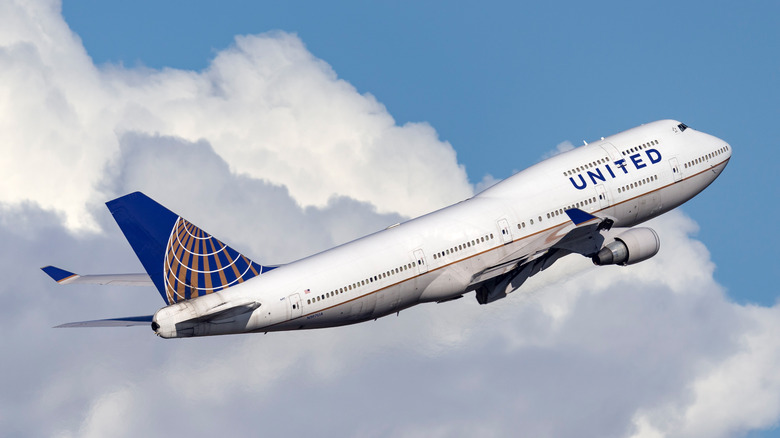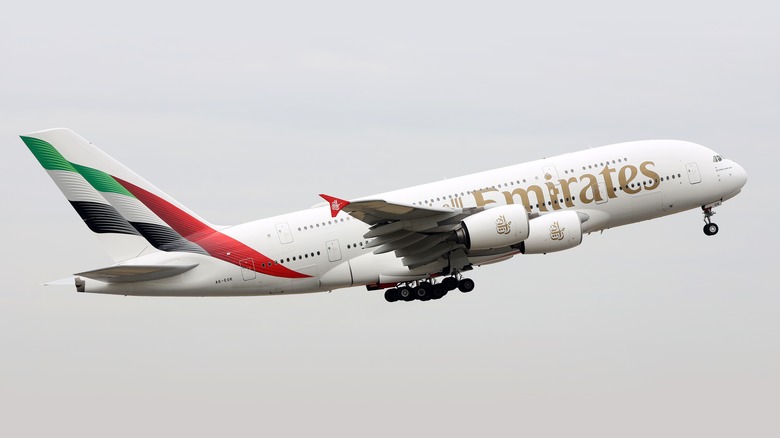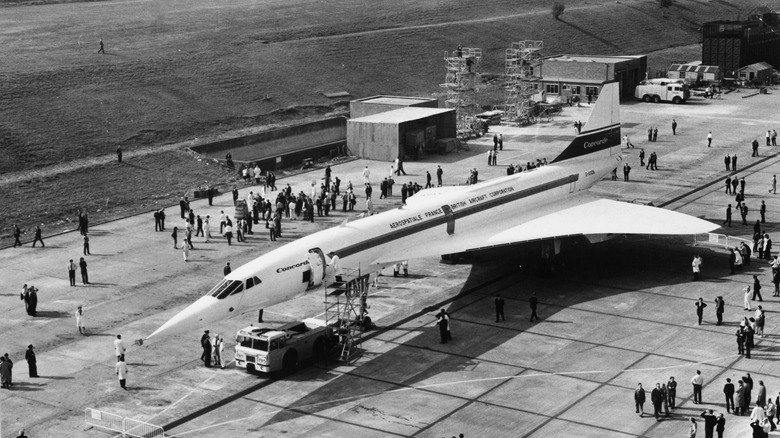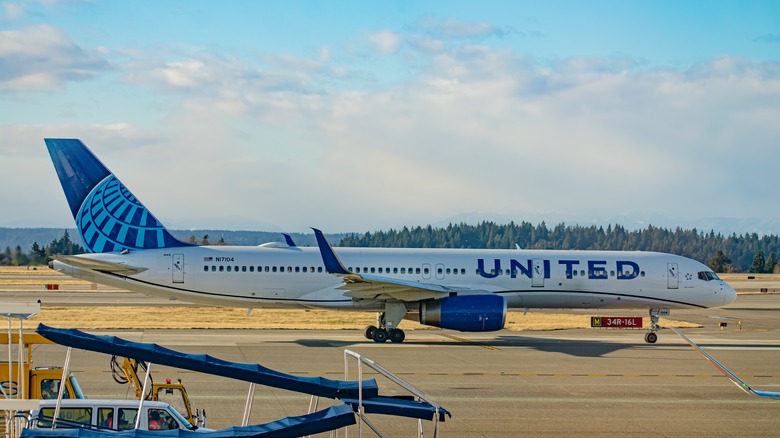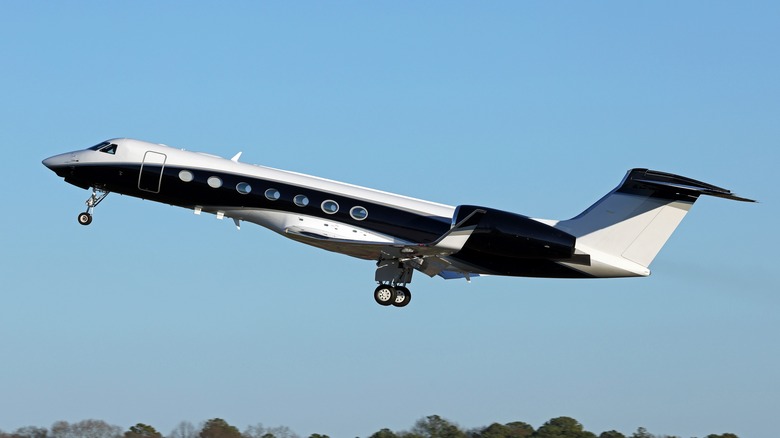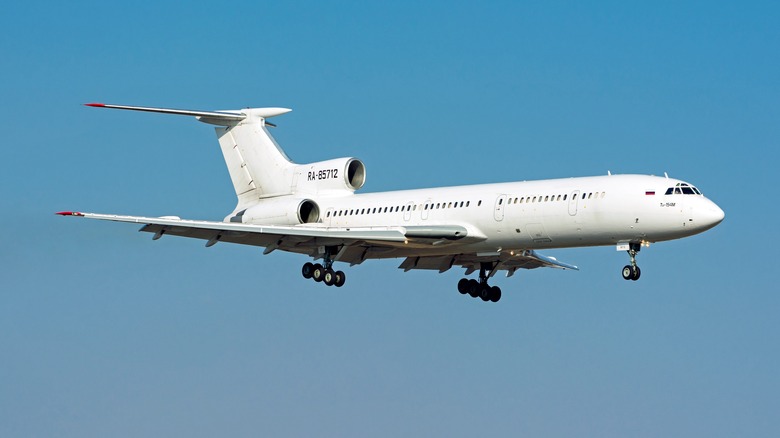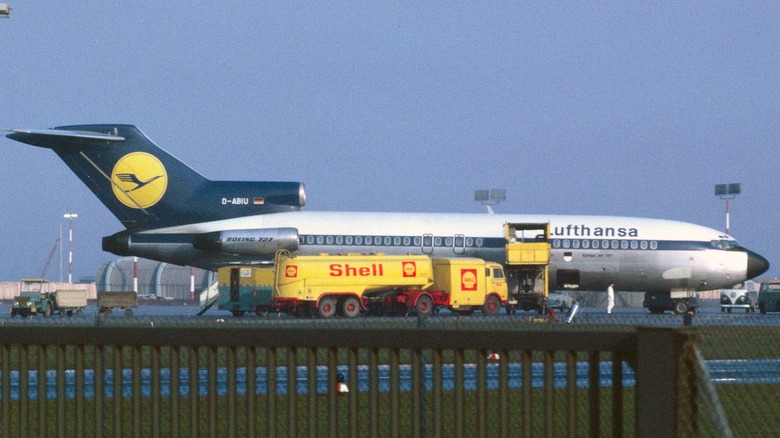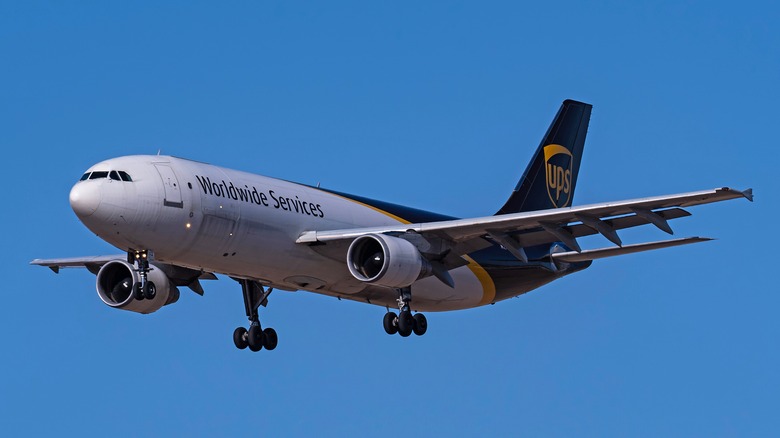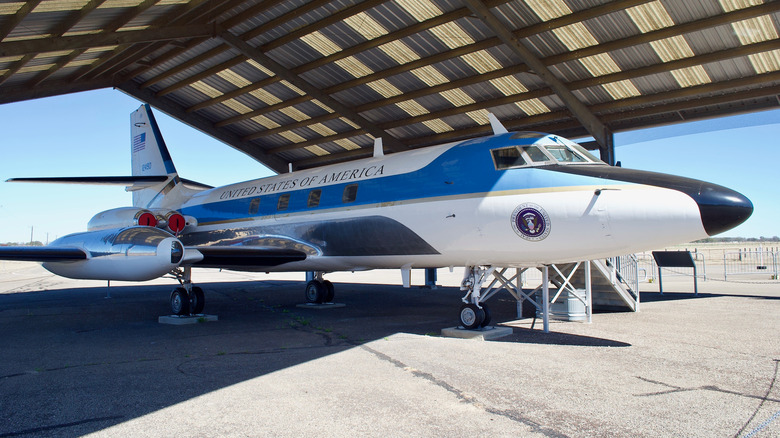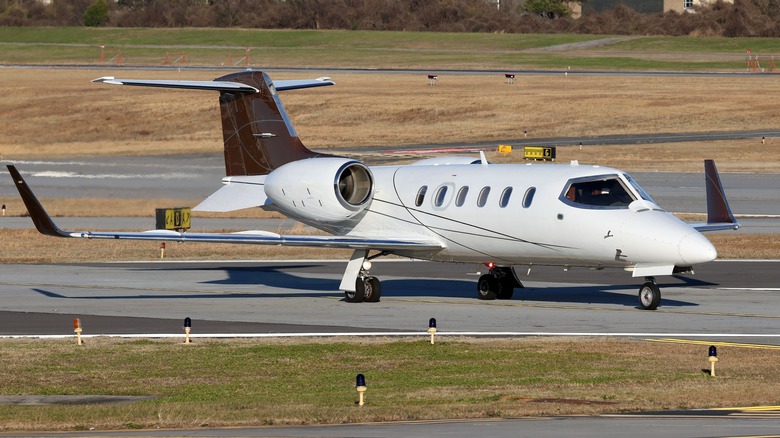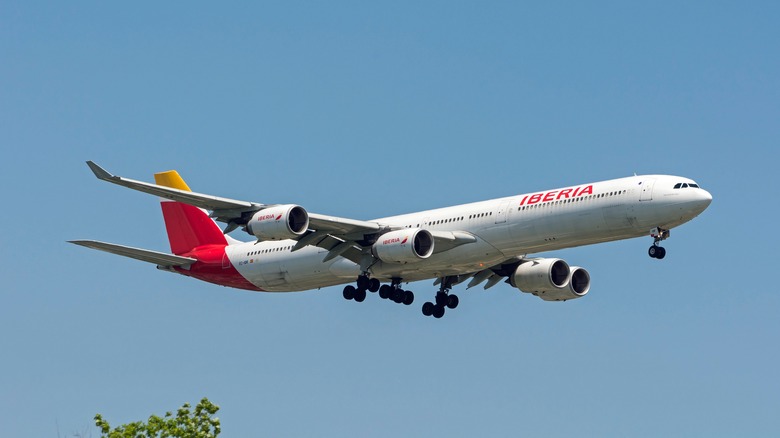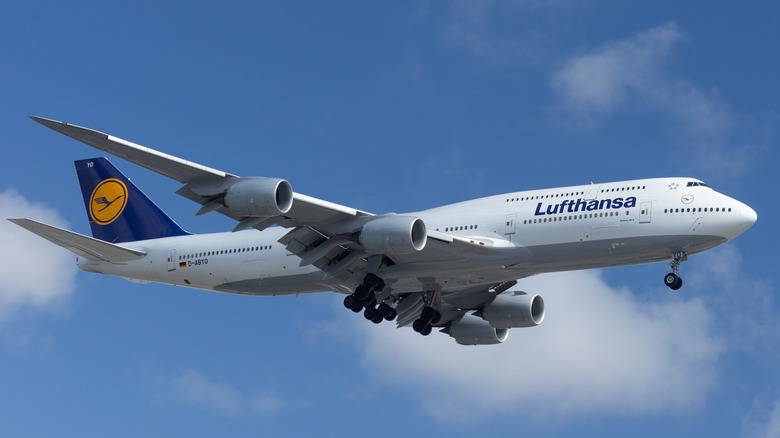11 Major Airplanes That Were Discontinued By Manufacturers, And Why
Air travel is no longer the preserve of the rich in the same way that it was in its earliest days. Sure, there are plenty of eye-wateringly expensive private jets that only the wealthiest in society can afford, but despite increasing ticket prices in recent years, the commercial aviation industry is in the midst of a post-pandemic travel boom. Demand for air freight services has also remained strong in recent years, despite geopolitical instability and supply chain constraints. With such high levels of demand, airlines and passengers can afford to be picky with the planes that they choose to fly.
Boeing and Airbus dominate the market today, despite a string of high-profile issues with Boeing's passenger jets in recent years. Their most popular models carry waitlists almost a decade long, with those wait times increasing as Boeing has constricted its production numbers. Of course, for every highly sought after aircraft model, there are plenty of other previously popular planes that are no longer in demand. Whether they were outdated, impractical, or simply outclassed by rivals, these 11 popular aircraft are no longer available to buy new today.
Airbus A380
As the largest passenger jet ever built, there was only ever going to be a limited market for the Airbus A380 superjumbo. It can carry more than 600 passengers across its two full-length decks, and the first example was delivered to Singapore Airlines in 2007. After an initial flurry of orders, it soon became clear that most airlines simply couldn't justify the purchase of such a huge plane, and so demand quickly fell. Emirates was the largest customer of the A380 having purchased over 120 examples, but most other airlines purchased only a handful to serve their most popular routes.
It was announced in 2019 that production of the A380 would end, since the demand simply wasn't there to keep the production line open. Most airlines instead favored the twin-jet A350, which could carry almost as many passengers but was notably cheaper to run. Thanks to their inherent inefficiency and limited versatility, many A380 aircraft were sent into retirement as the effects of the pandemic plunged many operators into losses. However, with the post-pandemic travel boom, many are now returning to service and are expected to remain in the skies for the next decade or more.
Concorde
After many years and thousands of hours of development, Concorde took its first commercial flight in 1976. For the first time, major global hubs like London, Paris, and New York were connected by an aircraft capable of traveling at supersonic speeds, vastly cutting down travel time for passengers. Concorde could complete journeys in less than half the time it took for a conventional passenger jet, and so it's easy to see why many passengers assumed that supersonic jets were the future of air travel. However, that was not to be.
The first issue with Concorde was that it was incredibly expensive and complex to produce. It was developed jointly by a British and French consortium, with two production lines, one in each country. It was built only for the flag carrier airlines of those two countries, and its high fuel costs and controversial sonic boom meant that it was only viable on select routes. As a result, only 20 examples were constructed before production ceased.
Questions were already being asked about the plane's future due to rising fuel costs before a fatal crash in 2000 sealed Concorde's fate. Air France Flight 4590 hit a piece of debris from another plane upon takeoff from Charles de Gaulle Airport in Paris, which caused a tire to burst. The debris from the tire damaged a fuel tank and caused a fire, with the plane subsequently losing control and crashing, killing all 109 people on board. The negative publicity caused passenger demand to drop significantly and Concorde was retired from service in 2003.
Boeing 757
Built for more than two decades between 1982 and 2004, the Boeing 757 was popular with both passengers and airlines. Over 1,000 examples were built, but a combination of factors led to the plane being discontinued despite many calling for an updated version to be built. The first issue facing the 757 was the competition from its sibling, the 737. A new generation of 737 was launched in the '90s that drastically updated its capabilities, making it nearly as versatile as the 757 but significantly cheaper to buy and run. Airlines gravitated towards this newer model, but as a result, 757 sales suffered.
The 757's design also made it less practical to update, with more significant –- and therefore costly –- revisions needed for it to become as efficient as market-leading models. Boeing's original plan was to scale down production but keep order books open for the plane, but in the wake of 9/11, overall demand for new planes plummeted. Boeing had to make drastic cuts, and one of the first casualties was the 757, which closed for new orders in 2002 and ended production two years later.
Gulfstream G550
Right up until the end of its production run, the Gulfstream G550 remained one of the longest range business jets in the world. The first G550 delivery was made in 2003, and the last example reached its intended buyer in 2021. The jet was an updated version of the Gulfstream V, which was considered the first ever ultra-long range private jet. It offered several advantages over its predecessors: additional range, extra cabin room, and additional standard features for both passengers and pilots.
Its place in Gulfstream's lineup was filled by the G600, an even more advanced jet, but one that comes with a substantially higher price tag. Much like the G550, the G600 is capable of connecting major hubs like Tokyo and New York without the need to refuel. Despite increased global concern about the outsized environmental impact of private jets, the industry continues to expand at a rapid rate. That means the G550 will likely continue to be a common sight at in-demand airports for the foreseeable future.
Tupolev Tu-154
Russia's last commercial Tupolev Tu-154 was finally retired from service in 2020, almost half a century after the first one left the factory. Production of the jet began in 1972, just as the then-Soviet Union's domestic aviation industry was starting to rapidly expand. The Tu-154 formed a vital part of that expansion, and was a common sight in the country's skies all the way through to the 2000s. It remained in production until 2013, but by that time, Russia's airlines had already largely replaced the jet with more modern, fuel-efficient aircraft from Airbus and Boeing.
The Tu-154 was also dogged by safety concerns throughout its working life. It was involved in more than 70 crashes, with both civilian and military jets affected. One high-profile incident in 2011 saw a Russian Air Force Tu-154 dancing in mid-air after its flight controls failed shortly after takeoff. In that incident, the plane landed safely without casualties, but in many cases, passengers were not so lucky. In total, almost 3,000 people have reportedly been killed as a result of Tu-154 crashes.
Boeing 727
Built between 1963 and 1984, the 727 was at one point the best-selling passenger jet on the planet. It played a key role in helping major carriers connect smaller airports around the U.S. to major hubs, as well as ferrying passengers on shorter international trips across both America and Europe. It was visually very different to most other planes thanks to its unique wings and three jet engines, one of which was mounted centrally above the fuselage.
Its unique design was also eventually the reason that the 727 was discontinued. Its three engines were substantially noisier than the newer twinjet 757, as well as being less efficient. As production for the 757 ramped up, there was little incentive for airlines to order the 727, and so it was discontinued. It would remain in use for another two decades after the last example left the factory, with Delta retiring its final 727 in 2003.
Airbus A300
The A300 was the first aircraft made by Airbus, taking its maiden flight in 1972. Airbus was created in an effort to unite aircraft production facilities across Europe, with parts of the A300 made in Germany and the U.K. being transported to Toulouse in France for final assembly. It was an unprecedented project and one that, at the time of its launch, attracted very few customers. Before launch, Airbus had only received orders for ten aircraft. However, after an extensive program of international demonstrations, the A300 slowly won favor with airlines both within Europe and outside of it.
By the time the aircraft was discontinued in 2007 as a result of declining sales, a total of 561 examples had been built. Almost half of those were reported to be still in service as of 2022. The plane became an increasingly popular choice for freight airlines in its later years, with all 14 examples built in its last year of production being freighters.
Lockheed JetStar
Private jets are notoriously expensive, with even the cheapest examples costing several million dollars. The market for private jets –- or business jets, to use the official terminology –- keeps increasing year on year, but the market may not have existed were it not for the Lockheed JetStar. It's considered the first ever business jet, although it was originally designed for government use. It took just 241 days from the date that the idea was conceived for the first example to take its maiden flight.
The jet was designed to carry between eight and 10 passengers depending on its configuration, and was ordered by several governments and air forces to transport high-ranking leaders and their staff. The U.S. Air Force was one such customer, ordering six examples in 1961 to transport the president and other officials. However, total orders for the aircraft were still lower than Lockheed's forecasts, and so the decision was made to market the jet to private buyers and corporations as a new category of personal transport.
It proved a successful move, with over 200 examples of the JetStar built before production ended due to declining interest at the end of the '70s. The jet's original engines did not comply with noise regulations introduced earlier in the decade, and so new engines were fitted to later models. However, these later models still sold in relatively small numbers, with only 40 second generation aircraft built. The JetStar remained in the skies for decades after it was discontinued, with the last known example retired in 2019.
Learjet
The Lockheed JetStar might have created the private jet market, but it was Learjet that really turned it into a booming industry. Designed and built by Bill Lear, the first Learjet was built in Kansas in 1963. Over the following decades, more than 3,000 examples would be built in various configurations, with the roomiest variants allowing eight passengers to travel. Various updates were unveiled over the years, and it remained the top choice for well-heeled flyers for several decades. The jet's eventual demise was down to changing consumer tastes, with buyers favoring larger models with more on-board amenities and longer ranges.
Some wealthy buyers even commission private aircraft of the size usually reserved for intercontinental passenger jets, like the Canadian rapper Drake's personal Boeing 767. With the market's decisive shift towards larger aircraft, it was perhaps inevitable that the relatively tiny Learjet would be discontinued eventually. The last Learjet was delivered to Northern Jet Management, a jet charter company, in 2022. Learjet's parent company, Bombardier, said at the time that it would be focusing its efforts on developing the larger business jets in its lineup.
Airbus A340
A highly capable ultra-long haul aircraft, the Airbus A340 was designed to connect major cities in different continents without the need to refuel. It became the first ever aircraft to fly non-stop between New Zealand and Europe in 1993, and was used by several European flag carrier airlines to establish a new network of ultra-long haul routes. However, it only remained popular for a relatively short period of time, as its globetrotting abilities were soon matched by newer and more fuel efficient aircraft.
At the time of the A340's launch, quad-jet aircraft were still the default option for airlines looking for long haul flights. They were more expensive than twinjet aircraft, but offered better range and were certified for use on a wider variety of routes thanks to their superior safety ratings. This began to change around the same time as A340 production was ramping up. Suddenly, airlines found that they could buy twinjet planes that were almost as capable as the A340, but were much cheaper to buy and run. As a result, the A340's glory days were over before they really started, although a few dozen remain in service for now.
Boeing 747
Arguably the most famous discontinued aircraft of all, the Boeing 747 was the original jumbo jet. It first entered service in 1970 and remained available to order until 2020, when Boeing announced its discontinuation. The last new commercial aircraft left the factory in December 2022, destined for cargo airline Atlas Air. Another pair of specially adapted 747 aircraft –- which will serve as the latest generation of Air Force One –- are still undergoing conversion works, with problems at Boeing pushing its estimated delivery window back to 2026.
The 747's demise was inevitable given the overall market shift from quad-jet long-haul aircraft to twinjets, with the latter being significantly more efficient and cheaper to purchase. Its successor, the 777X, will be a twinjet. Despite being out of commercial production, the 747 should remain a regular sight at airports for a while yet. Boeing was still taking orders for new passenger 747 aircraft into the 2010s, and most commercial aircraft remain in service for two decades or more. That said, they're already rarer than they once were, and only set to get rarer.
